wikiHow is a “wiki,” similar to Wikipedia, which means that many of our articles are co-written by multiple authors. To create this article, 30 people, some anonymous, worked to edit and improve it over time.
There are 8 references cited in this article, which can be found at the bottom of the page.
wikiHow marks an article as reader-approved once it receives enough positive feedback. In this case, 87% of readers who voted found the article helpful, earning it our reader-approved status.
This article has been viewed 642,464 times.
Learn more...
Genital warts are small, raised skin lesions that can look like the top of a cauliflower. Though found in both sexes, males can develop warts on the testes, penis, thighs, and groin area. It is caused by the very common human papilloma virus (HPV), of which there are more than 100 types. Most do not cause additional symptoms, but you may find the lesions itchy, painful, or bleeding at times. The most problematic subtypes are HPV 16 and 18, which carry a high risk of cancer. However, the most common subtypes are HPV 6 and 11. The virus is transmitted through sexual contact, including vaginal, anal, and oral sex. You can also find HPV lesions in/around the mouth, lips, anus, tongue, nose, eyes, and throat. The HPV vaccine is an effective way to prevent the disease. Vaccination of males with the HPV vaccine not only prevents the spread of HPV to females, but also prevents other related diseases and cancers.[1]
Things You Should Know
- Look out for flesh-colored lesions that are not filled with fluid and do not have dimples. These are all qualities of genital warts in men.
- Get prescribed medication by your doctor, like imiquimod, interferon alpha, podofilox, or podophyllin.
- If your warts persist, consider surgical options. For instance, electrosurgery involves a high-frequency electrical current needle to cut warts.
Steps
Identifying Genital Warts
-
1Examine your risk factors. Some behaviors put you at a higher risk for an HPV infection. Ask yourself the following questions since your doctor will most likely ask the same questions when you go in for testing:[2]
- How many sexual partners do you have? The more partners, the more likely you can acquire the virus.
- Do you use condoms? This barrier helps reduce sexually transmitted diseases, including HPV.
- How old are you? Genital warts have a prevalence with adolescents, teenagers, and young adults.
- Do you have a severe infection or cancer, or are you taking drugs that damage your immune system? Infections such as HIV/AIDS reduce the body's ability to fight infections. Blood cancers such as leukemia alter our immune cells and cause them to be dysfunctional. Drugs such as steroids reduce our immune system over time.
- Did you notice any skin damage to your genitals? Breaks in your skins such as cuts give the virus an opportunity to enter your body.
- Do you have an uncircumcised penis? Men who have not had their foreskin of the penis removed are more likely to acquire HPV and pass it along to their partners.
-
2Distinguish your symptoms from other infections/conditions. You may confuse warts for other conditions. It is best to schedule an appointment with your doctor for proper diagnosis. Look for the following characteristics to help you distinguish at home.
- HPV warts are flesh-colored lesions. Redder, fluid-filled blisters are more likely genital herpes.
- HPV warts are not fluid-filled and do not burst open. Genital herpes blisters are painful and can open—forming a sore—and spill fluid before healing. An ulcer (open skin lesion) on your penis can also signify the first stage of syphilis. Lesions caused by syphilis are usually painless;
- Though not always painless, pain and itchiness is more associated with herpes and genital warts.
- Other symptoms—including a red rash on the palms and soles, white patches in the mouth and genitals, fever, hair loss, and sore throat—in addition to genital warts may be secondary stage syphilis.
- Multiple small bumps circumferentially around the base of tip of the penis that are either flesh colored, red, yellow, pink, or translucent could be a condition known as pearly penile papules and are completely harmless. This is considered a normal variant of penile skin and is not contagious.
- HPV warts are not dimpled. A dimple on the top of the wart can indicate a viral infection known as mulluscum contagiosum. Mulluscum can be a sign of HIV infection as well.
Advertisement -
3See your doctor. Ultimately, a visit to your doctor is the best way to identify potential HPV warts. Your doctor will also help to determine the best treatment option. Usually HPV warts clear up within a few months and about 90% within two years without any treatment.[3] Sometimes a doctor will not provide treatment except to wait see if the warts regress or if you develop more bothersome symptoms. If you decide not to visit the doctor, observe the warts for:
- Increase in size
- Increase in number
- Developing more in new places on your body
- Developing more specific symptoms such as itchiness, pain, bleeding from the wart, hair loss, fever, white patches on mouth or genital area, sore throat, and an ulcer on the penis. As previously mentioned syphilis can cause warts and early detection and treatment with antibiotics is warranted. Syphilis can eventually lead to neurological problems over time if left untreated.
- Age & cancer — HPV is responsible for approximately 63% of penile cancer in the USA. The median age of diagnosis is 68 years old but can be as early as in your 30s. If you observe other symptoms such as fatigue, weight loss, blood from your penis, lumps on your penis, velvety rash, hardened penile skin, and smelly discharge, then a visit to the doctor is urgent.[4]
Treating Genital Warts with Medication
-
1Avoid over-the-counter treatments. It is advised not to apply any over-the-counter remedies to the genital area. The genital skin is very sensitive and delicate and applying chemicals without proper knowledge and training can lead to damage.
-
2See your doctor. Your doctor will perform a routine visual examination of the warts and the rest of your body looking for any additional warts. The doctor may apply a small solution of trichloroacetic acid to the area, which will whiten the warts to make them more visible and which can be used as a treatment to remove the warts. You will want to talk to your doctor for recommended treatment options.
- Treatments are based on many factors, including size and number of the warts, the area affected, previous treatments administered, and whether the outbreak is recurrent or not.
- Remember also that there is no cure for the virus only the wart itself.
-
3Inquire about immune response modifiers. These medications will boost immune proteins in your body to help it get rid of the wart. These medications are available in various types, including:[5]
- Imiquimod — Your doctor will apply a 5% imiquimod cream to the area using protective gloves and a pad. They will prescribe a prescription for the cream afterward. At home, apply the cream before bed using disposable gloves or disposable pads. After waking up in the morning (six to 10 hours after applying treatment), wash the area with soap and water to remove it. Apply three times per week for the next sixteen weeks.
- Interferon alpha — At the base of each wart, your doctor will inject 3 million international units (IU) of interferon. You will repeat this process with the doctor three times per week for the next three weeks. For bigger warts multiple injection may be done. The warts should disappear after four to eight weeks. If the warts remain after 12 – 16 weeks, your doctor may suggest a second treatment course.
-
4Ask about cytotoxic drug options. These drugs can destroy the warts and prevent the spread of them. However, they can also damage normal skin areas. If spilled or accidentally applied to an unaffected area, immediately remove the drug on the area(s) with water and soap. Side effects can include be pain, irritation, itchiness, and redness. Options include:[6]
- Podofilox — This is the preferred treatment for lesions less than 10 cm². To ensure correct usage (0.5 ml or 0.5g), your doctor will show you how much and how to apply the medication. Apply to the area using a cotton swab if liquid or finger if gel. Repeat for three consecutive days twice a day followed by four days of no treatment. Repeat this process for up to four weeks.
- Trichloroacetic acid (TCA) and bichloracetic acid (BCA) are both physician-applied treatments. Your doctor will apply the acid to the warts on a cotton ball. Your doctor may advise weekly treatment for up to four to six weeks. This is one of the most common treatments.
- Podophyllin — This is a physician-applied medication for warts less than 10 cm². Your physician will apply to the affected area sparingly. Your doctor will advise you to air dry the affected area to prevent it coming in contact with your clothes. Initial treatment should be left on for 30 – 40 min. Subsequent treatments can be from one to four hours, after which remove with soap and water. This treatment can be applied weekly for up to six weeks.
- This drug must not be used in pregnancy or possible pregnancy. Limit exposure to a female partner.
- 5-Fluorouracil — Your physician may apply the first dose or provide a prescription. Using a cotton swab apply it to the clean, affected area one to three times per week. Use sparingly. Let the cream air dry to prevent contamination of your clothes. After three to 10 hours (specified with your prescriptions), wash the area with soap and water to remove it.
- Sinecatechins — Your doctor may prescribe this green tea extract. Use your finger to apply a small layer of 15% ointment to the affected area sparingly. Repeat three times daily with your finger for up to sixteen weeks or till warts have disappeared. Do not wash off and avoid sexual contact.
-
5Look into home remedies. There are a number of home remedies targeted for wart removal, though clinical studies are lacking. According to naturopathic physicians, you can use many plant-based creams such as aloe vera, as well as vitamin A, C, and E supplements.[7] Discussing a proper treatment with a naturopathic physician would be advised.
- The concept of these treatment options is to correct for any nutritional deficiencies, which in turn will help your immune system fight off the warts. In addition, many of these treatments contain antioxidants that can fight infections.
Considering Surgical Options
-
1Consult your doctor about surgical options. Your doctor may suggest these options when large numbers of warts are present or a large area is affected. Your doctor may also recommend one of these options if you’ve had several recurrences of HPV warts.
-
2Ask about cryosurgery. An application of liquid nitrogen solution freezes the water found inside the warts, causing destruction of the cells that make up the warts.[8] The provider will clean the area of the warts with an alcohol swab. An applicator tip containing liquid nitrogen will be applied to each wart until up to a 5mm margin of surrounding skin is frozen. An additional thirty seconds of freezing will be done until the skin turns white followed by a thawing period where the white area disappears. If the pain is bearable another period of freezing will be done.
- Within 24 hours, a small fluid filled sac (bulla) forms over the treated area. An additional course of treatment can be applied in one to two weeks as necessary.[9]
- After two to four treatments within six to 12 weeks, 75-80% of patients experience a complete clearing of warts.[10]
- Store kits are available for this procedure, but healthcare professionals recommend having a doctor administer it.
-
3Inquire about electrosurgery. This uses a high-frequency electrical current needle to cut the warts. Your doctor will apply a local anesthetic to the area first.[11] Following the procedure your doctor may prescribe pain medication if needed.
- Electrosurgery has been found effective for a small number of lesions on the shaft of the penis.[12]
-
4Determine if surgical excision is the right option. For this option, your doctor will cut the wart out with a scalpel. For a minimal number of small warts, your doctor will inject 1% lidocaine anesthesia to numb the area. However, general anesthesia may be used for more extensive cases. Your doctor may suture the two sides of healthy skin back together depending on the size of the excised wart.[13]
- Removing warts may leave scars or the wart may even come back.
-
5Ask your doctor about laser surgery. This method uses a carbon dioxide laser to evaporate the wart and is especially helpful in recurrent cases. This is an outpatient procedure done at your doctor's office (usually a dermatologist). Your doctor will administer a general or regional anesthetic to prevent any pain or discomfort from the laser.[14]
- Your doctor will likely prescribe pain medication for after the procedure since most patients report significant discomfort after the surgery.[15]
- It is extremely important not to move while the laser is targeted on your skin as this may lead to damage to normal tissue.
Expert Q&A
Did you know you can get premium answers for this article?
Unlock premium answers by supporting wikiHow
-
QuestionI've had warts on my penis for over 20 years. What should I do?
 Chris M. Matsko, MDDr. Chris M. Matsko is a retired physician based in Pittsburgh, Pennsylvania. With over 25 years of medical research experience, Dr. Matsko was awarded the Pittsburgh Cornell University Leadership Award for Excellence. He holds a BS in Nutritional Science from Cornell University and an MD from the Temple University School of Medicine in 2007. Dr. Matsko earned a Research Writing Certification from the American Medical Writers Association (AMWA) in 2016 and a Medical Writing & Editing Certification from the University of Chicago in 2017.
Chris M. Matsko, MDDr. Chris M. Matsko is a retired physician based in Pittsburgh, Pennsylvania. With over 25 years of medical research experience, Dr. Matsko was awarded the Pittsburgh Cornell University Leadership Award for Excellence. He holds a BS in Nutritional Science from Cornell University and an MD from the Temple University School of Medicine in 2007. Dr. Matsko earned a Research Writing Certification from the American Medical Writers Association (AMWA) in 2016 and a Medical Writing & Editing Certification from the University of Chicago in 2017.
Family Medicine Physician
-
QuestionHow can I get this drugs in Nigeria?
 Chris M. Matsko, MDDr. Chris M. Matsko is a retired physician based in Pittsburgh, Pennsylvania. With over 25 years of medical research experience, Dr. Matsko was awarded the Pittsburgh Cornell University Leadership Award for Excellence. He holds a BS in Nutritional Science from Cornell University and an MD from the Temple University School of Medicine in 2007. Dr. Matsko earned a Research Writing Certification from the American Medical Writers Association (AMWA) in 2016 and a Medical Writing & Editing Certification from the University of Chicago in 2017.
Chris M. Matsko, MDDr. Chris M. Matsko is a retired physician based in Pittsburgh, Pennsylvania. With over 25 years of medical research experience, Dr. Matsko was awarded the Pittsburgh Cornell University Leadership Award for Excellence. He holds a BS in Nutritional Science from Cornell University and an MD from the Temple University School of Medicine in 2007. Dr. Matsko earned a Research Writing Certification from the American Medical Writers Association (AMWA) in 2016 and a Medical Writing & Editing Certification from the University of Chicago in 2017.
Family Medicine Physician
-
QuestionWould giving up smoking help get rid of warts?
 Chris M. Matsko, MDDr. Chris M. Matsko is a retired physician based in Pittsburgh, Pennsylvania. With over 25 years of medical research experience, Dr. Matsko was awarded the Pittsburgh Cornell University Leadership Award for Excellence. He holds a BS in Nutritional Science from Cornell University and an MD from the Temple University School of Medicine in 2007. Dr. Matsko earned a Research Writing Certification from the American Medical Writers Association (AMWA) in 2016 and a Medical Writing & Editing Certification from the University of Chicago in 2017.
Chris M. Matsko, MDDr. Chris M. Matsko is a retired physician based in Pittsburgh, Pennsylvania. With over 25 years of medical research experience, Dr. Matsko was awarded the Pittsburgh Cornell University Leadership Award for Excellence. He holds a BS in Nutritional Science from Cornell University and an MD from the Temple University School of Medicine in 2007. Dr. Matsko earned a Research Writing Certification from the American Medical Writers Association (AMWA) in 2016 and a Medical Writing & Editing Certification from the University of Chicago in 2017.
Family Medicine Physician
References
- ↑ http://www.cdc.gov/features/hpvvaccineboys/
- ↑ http://www.cancer.org/cancer/cancercauses/othercarcinogens/infectiousagents/hpv/hpvandhpvtesting/hpv-and-hpv-testing-hpv-risk-factors
- ↑ https://www.who.int/news-room/fact-sheets/detail/cervical-cancer
- ↑ http://www.cancer.org/cancer/penilecancer/detailedguide/penile-cancer-signs-symptoms
- ↑ http://emedicine.medscape.com/article/219110-treatment#aw2aab6b6b3
- ↑ http://emedicine.medscape.com/article/219110-treatment#aw2aab6b6b3
- ↑ https://www.ndhealthfacts.org/wiki/Warts
- ↑ https://www.aad.org/dermatology-a-to-z/diseases-and-treatments/u---w/warts/diganosis-treatment
- ↑ https://www.aad.org/dermatology-a-to-z/diseases-and-treatments/u---w/warts/diganosis-treatment
- ↑ http://emedicine.medscape.com/article/219110-treatment#aw2aab6b6b4
- ↑ http://emedicine.medscape.com/article/219110-treatment#aw2aab6b6b4
- ↑ http://emedicine.medscape.com/article/219110-treatment#aw2aab6b6b4
- ↑ http://emedicine.medscape.com/article/219110-treatment#aw2aab6b6b4
- ↑ http://emedicine.medscape.com/article/219110-treatment#aw2aab6b6b4
- ↑ http://emedicine.medscape.com/article/219110-treatment#aw2aab6b6b4
About This Article
Lesions on your penis and groin area may be a sign of genital warts, so make sure to go to your doctor as soon as you can for a proper diagnosis and treatment plan. To get rid of genital warts, avoid over the counter remedies. Instead, your doctor may recommend immune response modifiers, like Imiquimod and interferon alpha, which will boost immune proteins in your body. Alternatively, you might be prescribed cytotoxic drugs to destroy the warts and prevent them from spreading. Be careful if you use these drugs, as they can damage unaffected skin. Make sure to immediately remove the drug with soap and water if you accidentally apply it to normal skin. For more help from our Medical co-author, including how to talk to your doctor about surgical options, scroll down.


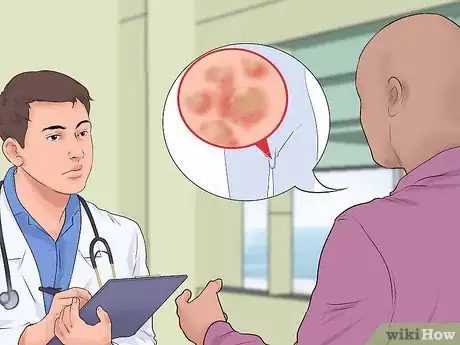


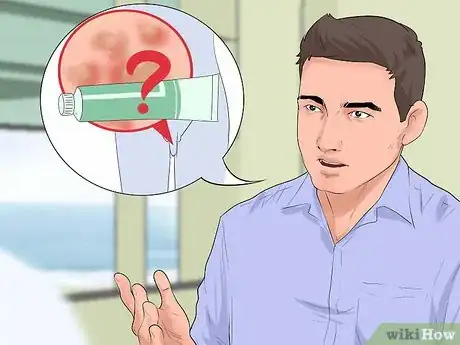
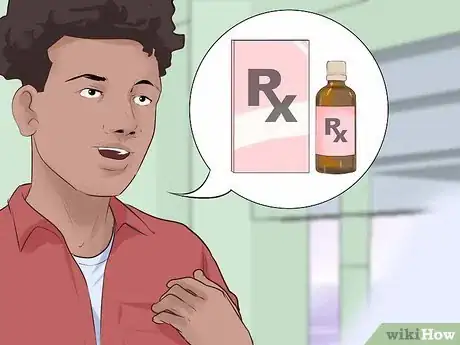




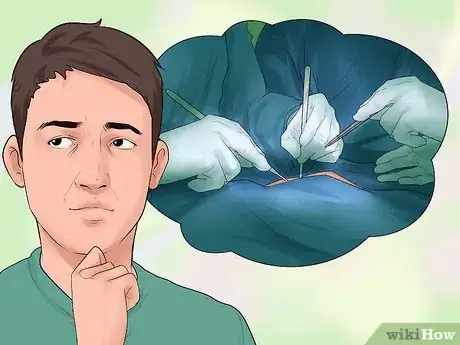

-Step-11-Version-2.webp)

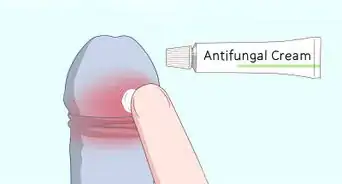
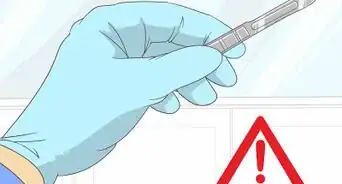

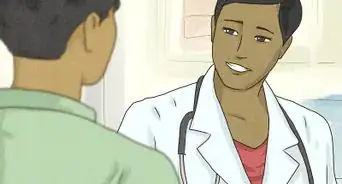
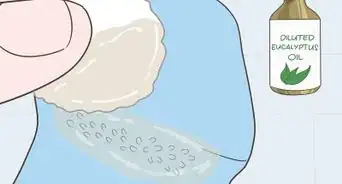
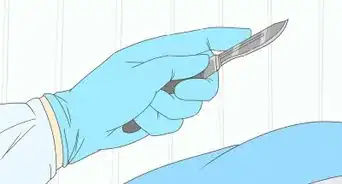


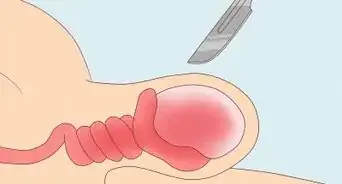


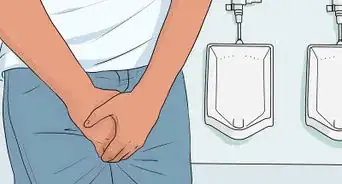









-Step-11-Version-2.webp)

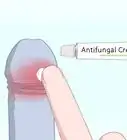
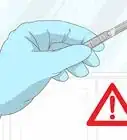



































Medical Disclaimer
The content of this article is not intended to be a substitute for professional medical advice, examination, diagnosis, or treatment. You should always contact your doctor or other qualified healthcare professional before starting, changing, or stopping any kind of health treatment.
Read More...